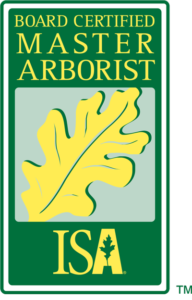How To Plant A Tree
Considering planting a tree in your home or living space? This is a great way to change your environment and start a longterm project with numerous health and wellness benefits. But you’ve got to know what you’re doing if you’re going to do it right.
Join us today for five great tips on how to plant a tree for better longterm results.
Choose The Type Of Tree You’ll Be Planting
When deciding what kind of tree to plant, start by deciding what role your new plant is going to have to play. Do you want a tree that provides shade to certain areas of your property? A tree that produces foods like nuts and fruit trees? Something that just looks good, or something more practical.
Planting trees from seeds can be very tricky, so you’ll want to consider the amount of work needed before you commit to that. Transplanting a tree has its benefits, too, but you’ll want to make sure you plant it where it’s going to get enough natural sunlight and in soil that promotes growth.
Pick A Spot and Time
Once you’ve decided on a type of tree, pick a place where you’ll want to actually grow your tree. Look out for overhead powerlines and areas where growing roots might stretch out into the street or sidewalk over time. Lastly, make sure not to creep into your neighbors’ view.
Next, you’ll need to research when to plant seedlings or baby trees, depending on their type. Trees grow best when planted at certain times of the year, and will have the best opportunity to grow and thrive if planted exactly at the right time. For more information, use the Internet or ask a local arborist or nursery staff for their opinions. They’ll know the best time to plant trees, and this information is usually free of charge.
Research Local Regulations
Digging a hole in your front yard can seriously impact nearby underground utilities. Local governments will usually specify Zone Acts to help keep this kind of work in line. Reach out to your local government to confirm you won’t have a problem with utility companies when digging into any one spot on your property.
Buy A Tree and Go For It!
It’s time to get your tree. A trade secret, at this point, is that you’ll want to buy a new sapling with bare roots. Over trees in pots, these have a much higher chance of successful long-term growth. If you opt for tree seeds over saplings, you have to start these off in a container before they’re ready to plant in your yard.
If you remove it from its container before you do, measure your sapling’s root ball. If your tree has roots covered with hemp, however, don’t remove it just yet – instead, keep the burlap sack in place and measure the root ball. The hole you make for the tree should be about 2-to-3 inches larger than the root ball itself so that it doesn’t fill up with standing water.
Place your sapling gently in your new hole. Make sure the hole is not too deep or too shallow, and that it stays straight while filling the hole with the compost and soil mix.
Finish Up
Before you fill up holes, take a moment to remove the burlap from the root shell. Use a wire cutter to remove wiring or wire cages that might kill trees if they grow into the roots.
Then go right ahead and fill up the hole. Don’t press down the soil with your feet, as a new tree’s roots are sensitive and can be easily damaged.
During its first year, your tree will need help to grow as tall and healthy as it can. Staking your tree will help prevent damage from strong winds and keep the plant growing upright until it thickens up.
Tie your stake gently to the tree. If you tie it too tightly, the trunk might grow into the tie itself over time. A large tree might require two or three stakes, but one is usually sufficient for a smaller tree.
Care For Your Trees
You should water new trees daily for the first few weeks after planting while factoring in the amount of rainfall during that time. After this, you can reduce the amount of watering. You may want to consider mulching underneath the roots, as well, to help wick away moisture, while pruning dead, broken, or diseased branches as needed.
Ready to plant a tree in your home or living space? Get in touch with Action Tree Care today for expert maintenance, removal, and services from Volusia County’s leading Certified Arborist.


